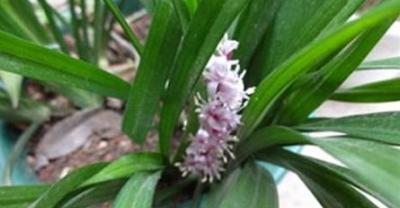Flower eel culture technology: flower eel artificial culture, flower eel how much a jin is not to protect animals?
Practical techniques for still water culture of Anguilla Anguilla Anguilla
The second-class national protected animal, Anguilla, is only wild, and artificial breeding is not a protected animal. It's about 200 per jin.
1 Water quality regulation of Anguilla culture
Anguilla has higher requirements for water quality. The pond should be disinfected before culture. Quicklime is generally used to disinfect the pond. It is appropriate to use quicklime of about 150 to 250 kg per 667m2 pond. At the same time, it can also increase the pH value of the pond water. If the pH value is above 11, it can also remove wild miscellaneous fish and insects in the water, and improve the acidity of the soil at the bottom. After disinfection, the pond water was kept for 15 to 20 days, and when its pH value was kept between 8 and 9, trial culture could be carried out. Other fish were generally used in the trial culture, and the eel was put into Anguilla Anguilla when the toxicity of lime disappeared and there was no problem in the trial culture.
In the process of culture, the water quality should be kept clear and green, and there should be an appropriate amount of blue-green algae in the water. Algae can play a role in shading, increasing oxygen and stabilizing water quality. If there are few algae in the water, it will make the water body thin, which will affect the feeding and growth of Anguilla. In addition, regular inspections should be carried out. If zooplankton are found in the water, they should be treated in time to prevent pollution to the water quality and affect the growth of Anguilla Anguilla. Zooplankton can be killed with b1 preparation and sprinkled along a range of about 2 m along the edge of the pool to control the zooplankton in the water to ensure that there are enough algae in the water. In addition, the dissolved oxygen, ammonia nitrogen, nitrite and pH value of the water quality should be tested, and once the problems are found, they should be dealt with in time. If the dissolved oxygen in the water is found to be low, the number of aerators should be increased, and the start-up time of the aerator should be prolonged to ensure that the oxygen concentration in the water meets the requirements.

2 feeding management of Anguilla Anguilla
The environment of water quality will affect the feeding condition of Anguilla. If the temperature difference between morning and evening is large, it will affect the food intake of Anguilla. Generally, the temperature difference in the pond should be controlled within 3 ℃. If the daily temperature difference is more than 4 ℃, it will lead to less feeding of Anguilla. In the process of culture, the temperature control during the change of temperature difference must be strengthened, for example, the greenhouse can be pulled off late at the turn of spring and summer, and the greenhouse can be built in advance at the turn of autumn and winter, so as to avoid the effect of too large temperature difference on the food intake of Anguilla. In order to ensure the food intake of Anguilla Anguilla, the feeding amount is generally controlled according to the water temperature in the pond. For example, when the temperature in the pond is between 24-29 ℃, the food intake is 2.5%-3%. When the water temperature exceeds 30 ℃, the feeding amount should be reduced accordingly to 2.2%-2.6%.
In addition, with the continuous growth of Anguilla Anguilla, the feeding amount should be increased accordingly. In the white seedling stage, the feeding amount of white feed should be 5%-6% of the body weight of eel, and when the growth is transferred to the black stage for a period of time, the feeding rate should be reduced to 5%-3.5%. There is also a close relationship between food intake and water quality of Anguilla. Ammonia nitrogen, nitrite nitrogen and other substances in the water can not exceed the standard, and the excessive harmful substances will lead to abnormal oxygen delivery in the body of the eel itself, which leads to irregular feeding of the eel.

3 Culture methods of Anguilla
The most commonly used culture method of Anguilla Anguilla in China is open-air still water culture. generally, the scale of Anguilla is less than 3.33 hm2. In the process of culture, all kinds of infrastructure should be improved, such as pond, water injection system, ancillary facilities, etc., and culture should be carried out by using natural water sources as far as possible. In order to keep the water quality clean in the culture process, the water should be changed moderately, each time the amount of water change should be kept at 1 × 10 × 1 / 7 of the pool water. In order to improve the water quality, we generally rely on planktonic cyanobacteria, water tankers and aerators to ensure that the oxygen in the water meets the demand. This culture method is low in cost, does not take much time to build the pond, and uses equipment to increase oxygen and consumes less electricity, but the overall yield is low, generally 1 000 kg per 667m2.
Eel ponds should be classified in culture, which can be divided into four categories. The area of adult eel ponds is the largest, and the first class pond is mainly used for feeding training of juvenile Anguilla Anguilla.

- Prev

Culture methods and matters needing attention of Cymbidium
The cultivation technique of Cymbidium is to cultivate Cymbidium with water. You can't get tap water directly. You must use trapped water. The so-called "trapped" water means putting tap water in.
- Next

Mixed culture model of freshwater farmed fish
In today's social culture environment, the traditional culture method is relatively simple, high cost, waste of resources and low rate of return. So there are more and more farmers and friends.
Related
- On the eggshell is a badge full of pride. British Poultry Egg Market and Consumer observation
- British study: 72% of Britons are willing to buy native eggs raised by insects
- Guidelines for friendly egg production revised the increase of space in chicken sheds can not be forced to change feathers and lay eggs.
- Risk of delay in customs clearance Australia suspends lobster exports to China
- Pig semen-the Vector of virus Transmission (4)
- Pig semen-the Vector of virus Transmission (3)
- Five common causes of difficult control of classical swine fever in clinic and their countermeasures
- Foot-and-mouth disease is the most effective way to prevent it!
- PED is the number one killer of piglets and has to be guarded against in autumn and winter.
- What is "yellow fat pig"? Have you ever heard the pig collector talk about "yellow fat pig"?

